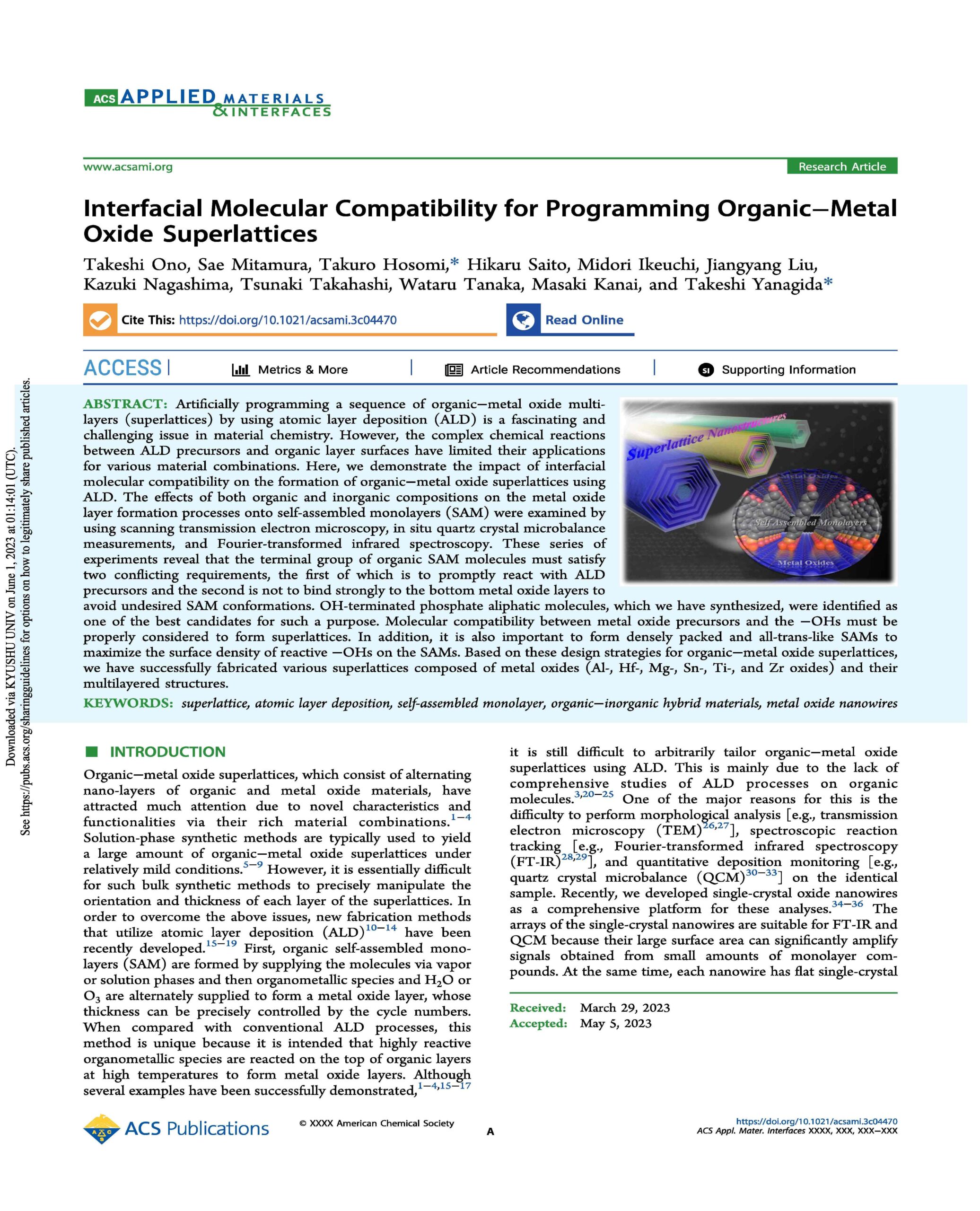Interfacial Molecular Compatibility for Programming Organic−Metal Oxide Superlattices
Journal of Chemical & Engineering Data 2009, 54, 10, 2953-2956 (Short Article)
研究論文概要
Artificially programming a sequence of organic–metal oxide multilayers (superlattices) by using atomic layer deposition (ALD) is a fascinating and challenging issue in material chemistry. However, the complex chemical reactions between ALD precursors and organic layer surfaces have limited their applications for various material combinations. Here, we demonstrate the impact of interfacial molecular compatibility on the formation of organic–metal oxide superlattices using ALD. The effects of both organic and inorganic compositions on the metal oxide layer formation processes onto self-assembled monolayers (SAM) were examined by using scanning transmission electron microscopy, in situ quartz crystal microbalance measurements, and Fourier-transformed infrared spectroscopy. These series of experiments reveal that the terminal group of organic SAM molecules must satisfy two conflicting requirements, the first of which is to promptly react with ALD precursors and the second is not to bind strongly to the bottom metal oxide layers to avoid undesired SAM conformations. OH-terminated phosphate aliphatic molecules, which we have synthesized, were identified as one of the best candidates for such a purpose. Molecular compatibility between metal oxide precursors and the −OHs must be properly considered to form superlattices. In addition, it is also important to form densely packed and all-trans-like SAMs to maximize the surface density of reactive −OHs on the SAMs. Based on these design strategies for organic–metal oxide superlattices, we have successfully fabricated various superlattices composed of metal oxides (Al-, Hf-, Mg-, Sn-, Ti-, and Zr oxides) and their multilayered structures.